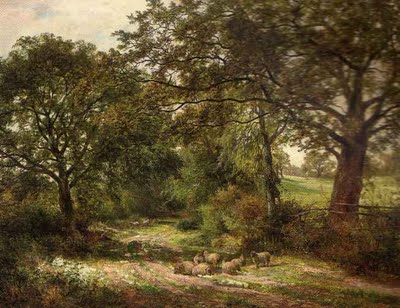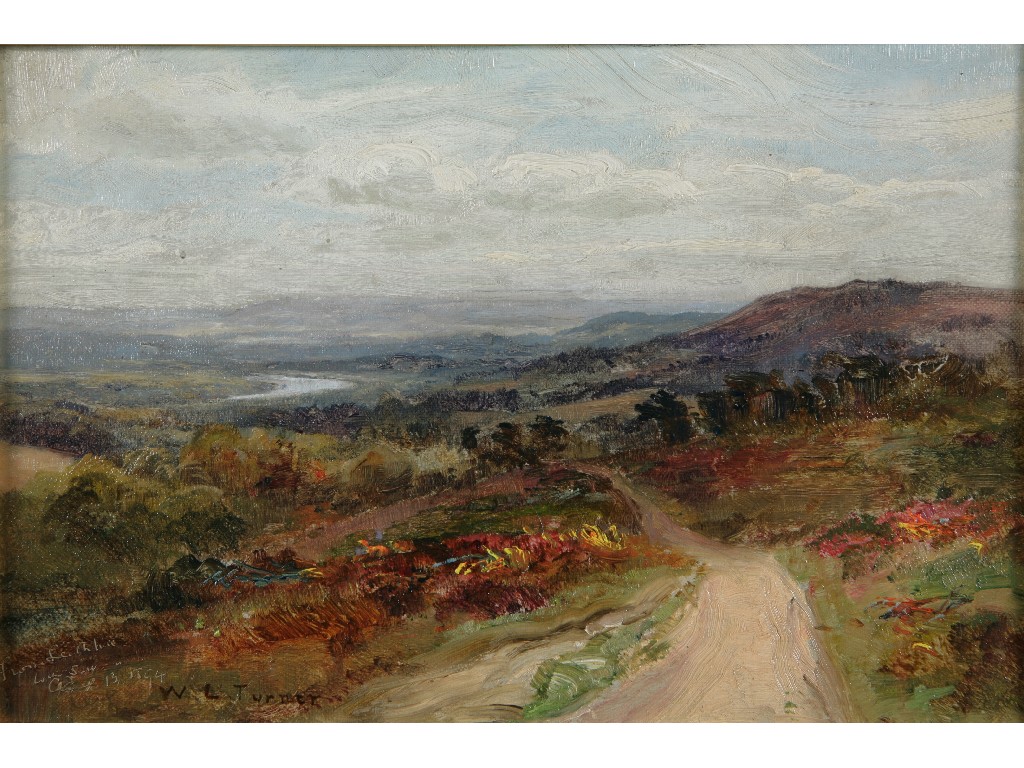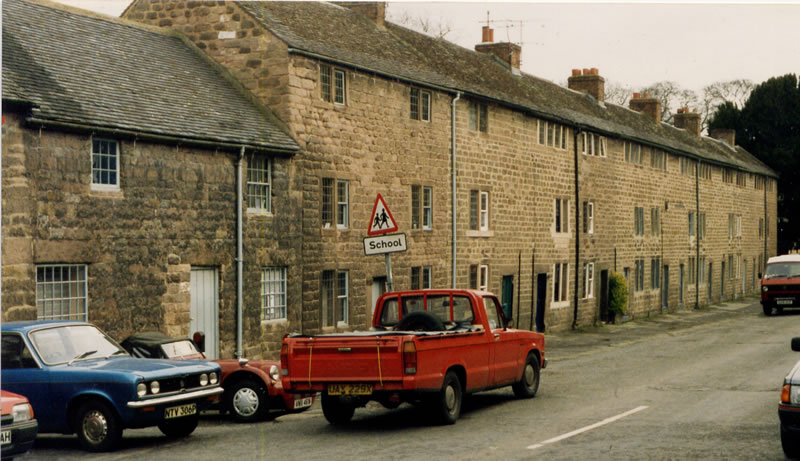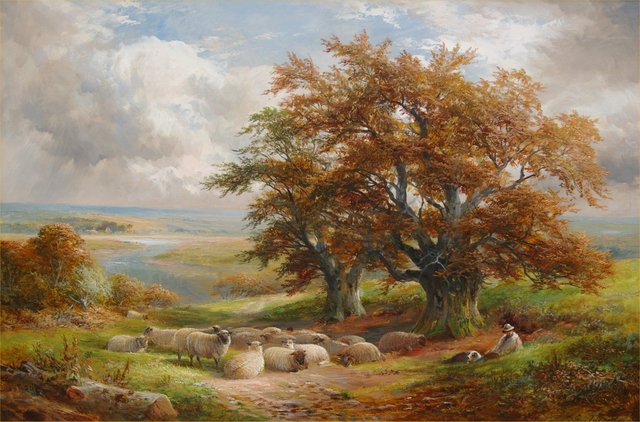|
Barrow Upon Trent
Barrow upon Trent is a village and civil parish in the South Derbyshire district of Derbyshire, England with a business park planned for the outskirts of the village. The village is south of Derby, and between the River Trent (to the south) and the Trent and Mersey Canal (to the north). According to the 2001 census the parish had a population of 546, increasing to 558 at the 2011 Census. Nearby places are Sinfin, Ingleby, Arleston, and Swarkestone. One of the earliest mentions of this place is in the Domesday book where it is listed amongst the lands given to Henry de Ferrers''Domesday Book: A Complete Translation''. London: Penguin, 2003. p. 748 by the King. The land included of ground space and there were four oxen. Some of the land was described as "waste" but the value was put at two shillings. The parish council owns an attractive row of ten Grade II listed cottages, known as "The Row". These are rented to people with village connections. and the artist George Turner ... [...More Info...] [...Related Items...] OR: [Wikipedia] [Google] [Baidu] |
St Wilfrid's Church, Barrow-upon-Trent
St Wilfrid’s Church, Barrow upon Trent is a Grade I listed parish church in the Church of England in Barrow upon Trent, Derbyshire. History The Church is a pre conquest Anglo Saxon building. It was given to the Knights Hospitaller in 1165 by Robert de Bakepuiz and they developed the building until around 1540. The church is home to an alabaster effigy of a priest, thought to be John de Belton, which is believed to be the oldest existing alabaster effigy of a priest in the country. The church is mentioned along with the village in the Domesday Book.''Domesday Book: A Complete Translation''. London: Penguin, 2003. p. 748 Within the churchyard is the grave of Anne Mozley, editor of the Anglican papers of Cardinal (St) John Newman. Parish status The church is in a joint parish with * All Saints’ Church, Aston-upon-Trent * St Andrew’s Church, Twyford * St Bartholomew’s Church, Elvaston * St James Church, Shardlow * St James’ Church, Swarkestone * St Mary the Virgin ... [...More Info...] [...Related Items...] OR: [Wikipedia] [Google] [Baidu] |
William I Of England
William I; ang, WillelmI (Bates ''William the Conqueror'' p. 33– 9 September 1087), usually known as William the Conqueror and sometimes William the Bastard, was the first Norman king of England, reigning from 1066 until his death in 1087. A descendant of Rollo, he was Duke of Normandy from 1035 onward. By 1060, following a long struggle to establish his throne, his hold on Normandy was secure. In 1066, following the death of Edward the Confessor, William invaded England, leading an army of Normans to victory over the Anglo-Saxon forces of Harold Godwinson at the Battle of Hastings, and suppressed subsequent English revolts in what has become known as the Norman Conquest. The rest of his life was marked by struggles to consolidate his hold over England and his continental lands, and by difficulties with his eldest son, Robert Curthose. William was the son of the unmarried Duke Robert I of Normandy and his mistress Herleva. His illegitimate status and his youth caused ... [...More Info...] [...Related Items...] OR: [Wikipedia] [Google] [Baidu] |
Villages In Derbyshire
A village is a clustered human settlement or community, larger than a hamlet but smaller than a town (although the word is often used to describe both hamlets and smaller towns), with a population typically ranging from a few hundred to a few thousand. Though villages are often located in rural areas, the term urban village is also applied to certain urban neighborhoods. Villages are normally permanent, with fixed dwellings; however, transient villages can occur. Further, the dwellings of a village are fairly close to one another, not scattered broadly over the landscape, as a dispersed settlement. In the past, villages were a usual form of community for societies that practice subsistence agriculture, and also for some non-agricultural societies. In Great Britain, a hamlet earned the right to be called a village when it built a church. [...More Info...] [...Related Items...] OR: [Wikipedia] [Google] [Baidu] |
Listed Buildings In Barrow Upon Trent
Barrow upon Trent is a civil parish in the South Derbyshire district of Derbyshire, England. The parish contains twelve listed buildings that are recorded in the National Heritage List for England The National Heritage List for England (NHLE) is England's official database of protected heritage assets. It includes details of all English listed buildings, scheduled monuments, register of historic parks and gardens, protected shipwrecks, a .... Of these, one is listed at Grade I, the highest of the three grades, and the others are at Grade II, the lowest grade. The parish contains the villages of Barrow upon Trent and Arleston and the surrounding countryside, and is mainly rural. The listed buildings include houses, two churches, a farmhouse, a bridge over the Trent and Mersey Canal, a former school, and a war memorial. __NOTOC__ Key Buildings References Citations Sources * * * * * * * * * * * * * * {{DEFAULTSORT:Barrow upon Trent Lists of listed ... [...More Info...] [...Related Items...] OR: [Wikipedia] [Google] [Baidu] |
Melbourne, Derbyshire
Melbourne () is a market town and civil parish in South Derbyshire, England. It was home to Thomas Cook, and has a street named after him. It is south of Derby and from the River Trent. The population of the civil parish at the 2011 Census was 4,843. Toponymy The name Melbourne means "mill stream", i.e. the mill by the stream. It was first recorded in Domesday Book (DB 1086 Mileburne = mill stream) as a royal manor. Through William Lamb, 2nd Viscount Melbourne, Melbourne is the namesake of the Australian city. History A parish church building dates from around 1120. In 1311, Robert de Holand fortified the existing royal manor house to form Melbourne Castle, though the fortification was never completed. Jean, duc de Bourbon, the most important French prisoner taken at the Battle of Agincourt (1415), was detained at the castle for 19 years. Plans envisaged imprisoning Mary, Queen of Scots at Melbourne Castle in the 16th century, but it had deteriorated into a poor state ... [...More Info...] [...Related Items...] OR: [Wikipedia] [Google] [Baidu] |
A5132 Road
List of A roads in zone 5 in Great Britain starting north/east of the A5, west of the A6, south of the Solway Firth/Eden Estuary The River Eden is a river in Fife in Scotland, and is one of Fife's two principal rivers, along with the Leven. It is nearly long and has a fall of around . It flows from Burnside, near the border with Perth & Kinross, then slowly across the ... (roads beginning with 5). Single- and double-digit roads Three-digit roads Four-digit roads (50xx) Four-digit roads (51xx) Four-digit roads (52xx) Four-digit roads (53xx to 57xx) References {{DEFAULTSORT:A Roads In Zone 5 Of The Great Britain Numbering Scheme 5 5 ... [...More Info...] [...Related Items...] OR: [Wikipedia] [Google] [Baidu] |
David Payne (artist)
David Payne (1843 – 1894) was a Scottish landscape painter. Biography Payne was born in Annan in the old county of Dumfriesshire, the son of a Mason. He was educated at Annan Academy (along with fellow artist William Ewart Lockhart). He initially made his living as a house painter before becoming an artist. Payne moved to Derby in 1869 and was recorded as living at several places in the county of Derbyshire in the 1880s including Duffield and Barrow upon Trent. Payne was a student of George Turner "Derbyshire's John Constable") who also lived in Barrow upon Trent. Payne's carving of two anglers won the 1882 Derby Art Gallery medal for industrial art and the sculpture and medal have now been repurchased by the gallery. Payne became a rural landscape and ''trompe-l'œil'' artist. He exhibited at the Royal Birmingham Society of Artists (R BSA), the Nottingham Museum and Art Gallery, and was a member of the Royal Scottish Academy (RSA). He is regarded as one of the best o ... [...More Info...] [...Related Items...] OR: [Wikipedia] [Google] [Baidu] |
William Lakin Turner
William Lakin Turner (25 February 1867 – 21 October 1936) was an English landscape artist. Life and work William Lakin Turner was born to George Turner and his wife, Eliza Turner (née Lakin) (1837–1900) in 1867 at Barrow upon Trent, Derbyshire. He was educated locally before he boarded at Trent College in Long Eaton, Derbyshire. He was the eldest of four children and inherited his artistic talent from his father who was known as ''"the Derbyshire Constable."'' George Turner had a number of successful students including David Payne and Louis Bosworth Hurt. The family was not related to the artist J. M. W. Turner. George Turner served on the Art Committee of Derby Art Gallery and both his and William's paintings are included in the city's collection. Turner lived at various places, including Fulham, Loughton, (Essex), at Deerholme in Levens, and at Yew Tree Cottage, Applethwaite, Keswick, where he painting some of his best known paintings of the Lake District. Fol ... [...More Info...] [...Related Items...] OR: [Wikipedia] [Google] [Baidu] |
Cromford
Cromford is a village and civil parish in Derbyshire, England, in the valley of the River Derwent between Wirksworth and Matlock. It is north of Derby, south of Matlock and south of Matlock Bath. It is first mentioned in the 11th-century Domesday Book as ''Crumforde'', a berewick (supporting farm) of Wirksworth, and this remained the case throughout the Middle Ages. The population at the 2011 Census was 1,433. It is principally known for its historical connection with Richard Arkwright and the nearby Cromford Mill, which he built outside the village in 1771. Cromford is in the Derwent Valley Mills World Heritage Site. The Cromford mill complex, owned and being restored by the Arkwright Society, was declared by Historic England as "one of the country’s 100 irreplaceable sites". It is also the centrepiece of the Derwent Valley Mills UNESCO World Heritage Site. In 2018, the ''Cromford Mills Creative Cluster and World Heritage Site Gateway Project'' was listed as a fina ... [...More Info...] [...Related Items...] OR: [Wikipedia] [Google] [Baidu] |
George Turner (artist)
George Turner (2 April 1841 – 29 March 1910) was an English landscape artist and farmer who has been called "Derbyshire's John Constable". Life and work Turner was born in Cromford, Derbyshire in England, but then moved to Derby with his family. He showed an early talent for music and art - encouraged by his father Thomas Turner, who although a tailor by profession was also an art enthusiast. Turner was largely self-taught and went on to become a professional painter and art teacher. Turner lived in Derbyshire all his life. In 1865 he married Eliza Lakin (1837 - 1900), becoming a part-time farmer and raising four children at Walnut farm in Barrow upon Trent. He had a number of successful students including David Payne and Louis Bosworth Hurt. After Eliza's death in 1900, he moved to Kirk Ireton and later married fellow artist Kate Stevens Smith (1871-1964) - they set up home in Idridgehay where he died in 1910. His son William Lakin Turner (1867-1936) also became a la ... [...More Info...] [...Related Items...] OR: [Wikipedia] [Google] [Baidu] |
Anne Mozley
Anne Mozley (17 September 1809 – 27 June 1891)Albert Frederick Pollard. ''Anne Mozley'' Dictionary of National Biography, 1885-1900, Volume 39. p. 249. was a British author and critic. She lived in Derby and the small village of Barrow-upon-Trent, which is south of the city. She has been described as an almost anonymous author, as few of her works were attributed to her on first publication. She is credited with the first review of George Eliot's book, ''Adam Bede'', that recognized that it had to be written by a woman. Mozley was known as an educated and religiously interested individual. After taking over her brother Thomas's house, she dedicated her time to literary and written works, many of which she published between 1843 and 1849. She then edited books for the '' Christian Remembrancer.'' Mozley continued to write and publish works until her death in 1891. She became blind two years before her death. However, she was remembered for her many writings, particularly be ... [...More Info...] [...Related Items...] OR: [Wikipedia] [Google] [Baidu] |
Listed Building
In the United Kingdom, a listed building or listed structure is one that has been placed on one of the four statutory lists maintained by Historic England in England, Historic Environment Scotland in Scotland, in Wales, and the Northern Ireland Environment Agency in Northern Ireland. The term has also been used in the Republic of Ireland, where buildings are protected under the Planning and Development Act 2000. The statutory term in Ireland is " protected structure". A listed building may not be demolished, extended, or altered without special permission from the local planning authority, which typically consults the relevant central government agency, particularly for significant alterations to the more notable listed buildings. In England and Wales, a national amenity society must be notified of any work to a listed building which involves any element of demolition. Exemption from secular listed building control is provided for some buildings in current use for worship, ... [...More Info...] [...Related Items...] OR: [Wikipedia] [Google] [Baidu] |








